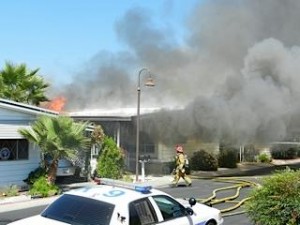Tennis Shoes and Boots on the Ground – People Make the Difference!
Building Emergency Response Teams
We’ve spent a lot of time covering the circumstantial and situational issues . . . the reasons for (and the methodology of) personal preparations. And we’ve alluded to the benefits of cooperative action with neighbors and co-workers. From here on we will be focusing on ways to get others involved with the objective being to build teams . . . not just on paper.
Why Teams are Important
By way of laying the groundwork – the “why” teams are important – let’s look at some of the realities:
First, In a real emergency, your (or your neighbor’s) life may well hang in the balance with only minutes to spare — and official help may be hours, days or too many minutes away. For the critical moment, it’s just you and your neighbors.
Second, would you (or they) know what to do? Here’s where training, rehearsal and pre-incident planning can make the difference between life or death.
Third, it’s important to take personal responsibility in building an emergency supply of food, water and medicines for you, your family and your pets. That goes without saying. But if you are the only resident building your emergency plan, how safe are you really? Are you willing to share . . . or prepared to shoot your neighbors because they don’t have emergency supplies? A lot depends, of course, on where you live or work and the kind of neighbors and/or co-workers you have.
Fourth, helping each other through trying times is characteristic of a civilized society and Americans have a proud history of standing together.
Fifth, a real team organization has organized and planned for likely contingencies. And each member of the team knows what to do without waiting for a consensus of good Samaritans to direct him or her.
Focus on the Team, not the Plan
There are other reasons for building an effective Emergency Response Team, but these are the big ones. And when we talk about a Survival or Emergency Plan, we’re decidedly NOT talking about a bulky document that covers every possible contingency.
(If you work for a large corporation, you probably know what we’re referring to here. There is a tendency in corporate circles to build a plan that is measured in its bulk! And, of course, nobody reads it!)
Next time, we’ll talk about the obstacles to building a team.
We have had some experience with obstacles!
Joe Krueger
Your Emergency Plan Guide Team
P.S. You can find all the CERT Team articles by clicking on CERT in the skills-building section, in the column to the right.





